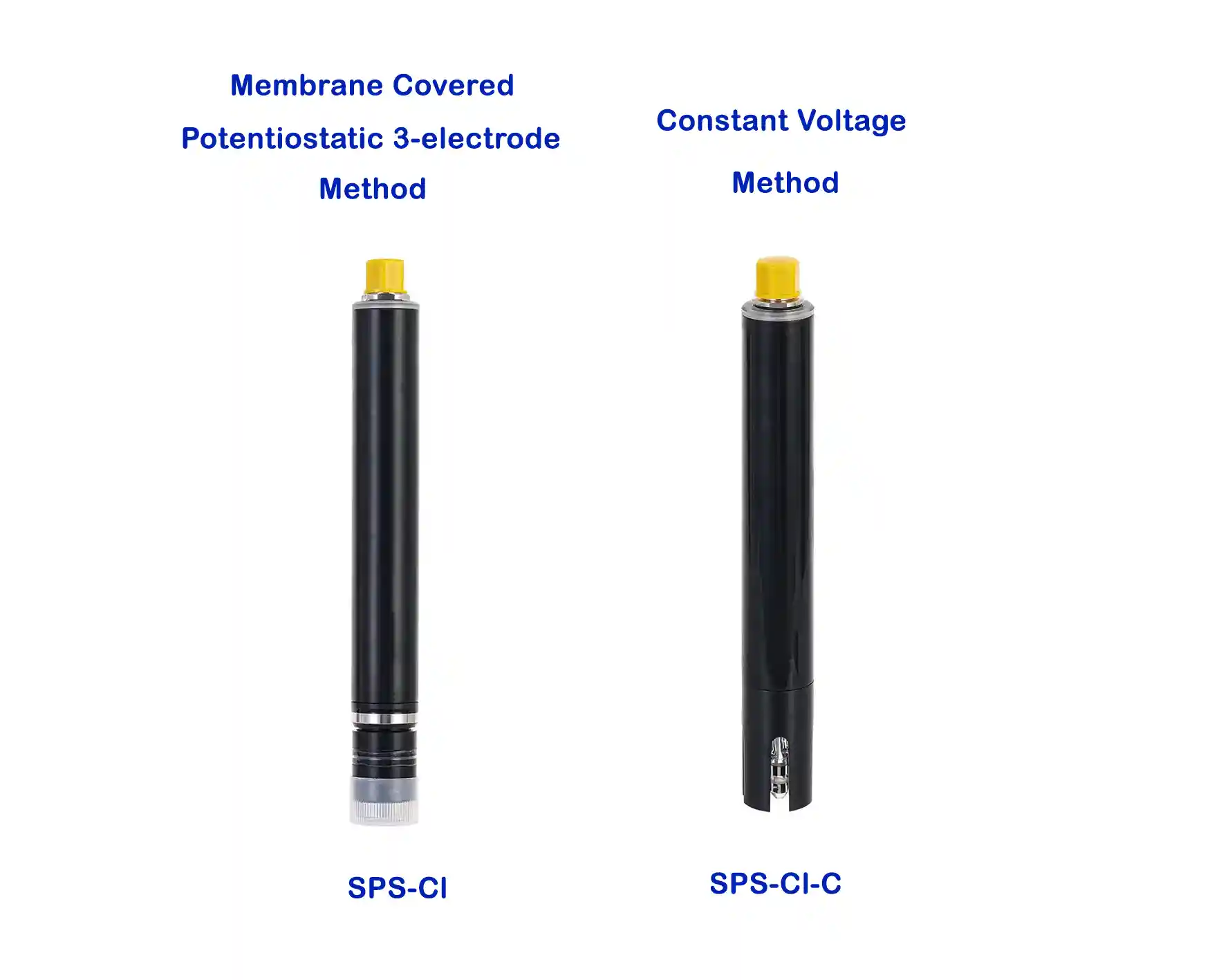En método de 3 electrodos potenciostáticos cubiertos por membrana y el método de tensión constante son ambas técnicas electroquímicas, pero difieren en sus mecanismos de control, aplicaciones y montajes experimentales. A continuación se ofrece una comparación detallada:
1. Método de 3 electrodos potenciostáticos recubiertos de membrana
- Principio:
- Utiliza un potenciostato para mantener un potencial constante entre el electrodo de trabajo (WE) y el electrodo de referencia (RE) mientras se mide la corriente entre el WE y el contraelectrodo (CE).
- A membrana cubre el electrodo de trabajo para permitir selectivamente ciertas especies (por ejemplo, oxígeno disuelto en sensores tipo Clark) mientras bloquea las sustancias interferentes.
- Características principales:
- Potencial controlado: El potenciostato ajusta la corriente para mantener un potencial fijo en la WE frente a la RE.
- Configuración de 3 electrodos:
- Electrodo de trabajo (WE): Donde se produce la reacción de interés.
- Electrodo de referencia (RE): Proporciona un potencial de referencia estable.
- Contraelectrodo (CE): Completa el circuito sin afectar al potencial WE.
- Papel de la membrana: Aumenta la selectividad permitiendo que sólo analitos específicos lleguen al WE.
- Aplicaciones:
- Sensores de oxígeno disuelto (electrodo Clark).
- Biosensores (por ejemplo, sensores de glucosa).
- Estudios de corrosión en los que se necesita un transporte selectivo de iones.
2. Método de tensión constante
- Principio:
- Aplica un tensión fija (no necesariamente controlado frente a un electrodo de referencia) entre dos electrodos (a menudo una configuración de 2 electrodos).
- La corriente se mide en función del tiempo o de la concentración de analito.
- Sin regulación activa del potencial (a diferencia de un potenciostato).
- Características principales:
- Controlado por tensión pero no potenciostático: No hay bucle de realimentación para mantener un potencial preciso frente a una referencia.
- Configuración más sencilla: Utiliza a menudo 2 electrodos (trabajo y mostrador).
- Sin membrana (normalmente): A menos que se haya diseñado específicamente para la selectividad.
- La corriente puede desviarse con el tiempo debido a los efectos de la polarización.
- Aplicaciones:
- Experimentos básicos de electrólisis.
- Mediciones de conductividad.
- Algunos sensores de gas amperométricos (sin ajuste fino potencial).
Principales diferencias
| Característica | Potenciostático de 3 electrodos recubierto de membrana | Método de tensión constante |
|---|---|---|
| Mecanismo de control | Potenciostático (WE fijo frente a potencial RE) | Tensión aplicada fija (sin electrodo de referencia) |
| Configuración de electrodos | 3 electrodos (WE, RE, CE) | Normalmente 2 electrodos (WE y CE) |
| Estabilidad potencial | Gran estabilidad (RE garantiza la precisión) | Menos estable (sin referencia) |
| Uso de la membrana | Sí (para selectividad) | Normalmente no |
| Medición actual | Mide con precisión la corriente faradáica | Mide la corriente total (puede incluir la deriva) |
| Aplicaciones | Biosensores, estudios de corrosión, detección de O₂. | Electrólisis básica, amperometría simple |
Conclusión
- En método potenciostático de 3 electrodos recubiertos de membrana es más precisa y selectiva, ideal para aplicaciones analíticas en las que el control del potencial y la selectividad son cruciales.
- En método de tensión constante es más sencillo y menos precisoEl control de potencial es adecuado para experimentos electroquímicos básicos en los que no es necesario un control exacto del potencial.

